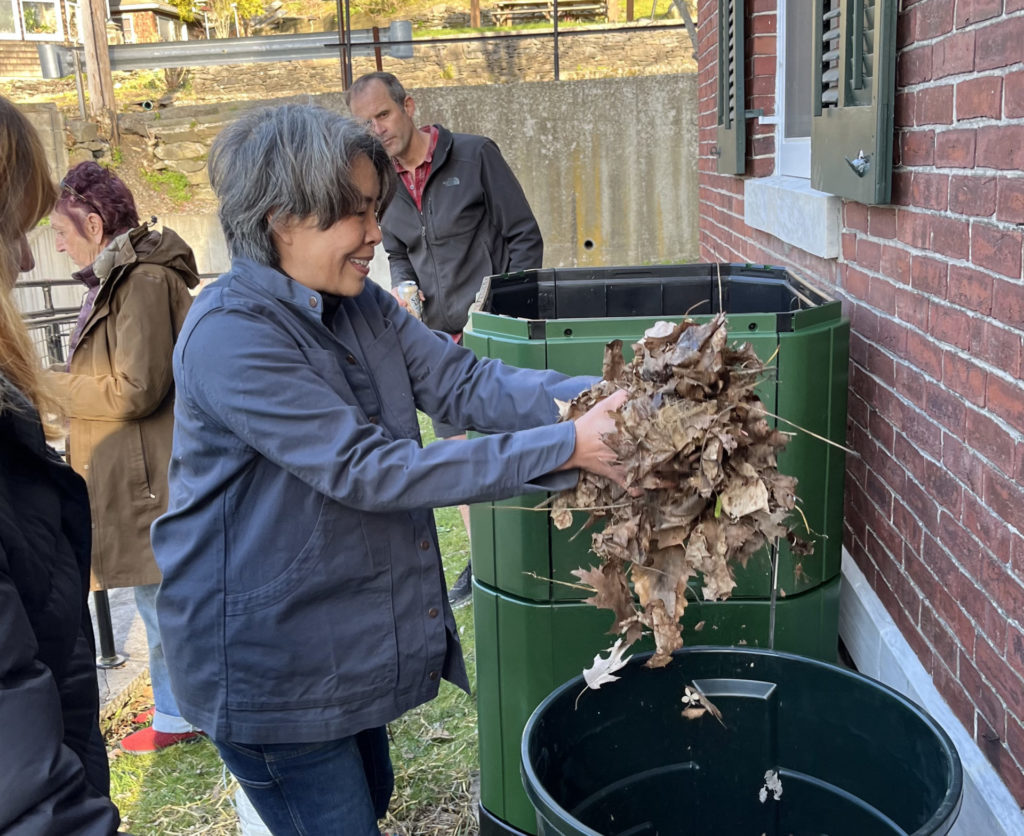Make Dirt for Earth Day — Compost!

We just set up a snappy Aerobin 400 insulated composter at Morton Memorial Library here in Rhineciff, a drop-off point for the community. Everyone is welcome to toss their kitchen and garden scraps (no meat/fish, dairy or oils, of course) into its self-aerating innards, followed by a handful or two of browns like the dead leaves in an adjacent bin. Before long, as the microbes (snacking on the browns for fuel) and heat do their thing, we’ll share the nutrient-rich soil that results. Black gold for all.
There are a lot of reasons to love this composter—including that it’ll keep things hot even in winter. But from a broader perspective, it’s a reminder of our relationship to and reliance on dirt, the growing medium for all forms of life. Even if we’re not literally planted in the stuff, it’s the foundation for pretty much everything we depend upon, from our homes and cars to the bridges that connect us and the food we eat. Composting, whether in a lidded self-heating bin, a pile on our property, or a designated area at a community garden, is a way of recycling “waste” (which isn’t waste at all when composted) and giving back to the earth what is rightfully hers. Even from a selfish point of view, it’s a win, generating rich soil that will enhance anything you’ve got going in your garden and keep down the need for watering.
Composting is also a significant way to ameliorate our assault on the earth. Americans generate hundreds of tons of food waste each year—an average family of four tosses $150 worth of food each month, most of it fruit and vegetables. The bulk winds up in landfills, decomposing beneath non-organic trash in an anaerobic atmosphere. The resulting methane and carbon dioxide emissions, aka greenhouse gases, trap heat in the atmosphere—for centuries.
According to the NRDC, only 6% of our food waste gets composted. It’s so easy to change this paradigm. In San Francisco, for example, programs have been implemented to divert 80% of their food waste from landfills. We can start small—in our yards, at our libraries, in our towns. The key is to start.
There are different ways to compost, from simply letting a pile of leaves break down over the seasons to carefully layering and monitoring browns and greens (the nitrogen-filled grass and garden clippings and food scraps) while measuring and maintaining nitrogen and carbon levels and temperatures to bringing in worms and creating a living vermiculture.
All manner of sleek food scraps bins are available for the saving of banana peels, onion skins and coffee grounds between trips to the compost pile/bin, but a heavy duty plastic bag or container can do the job just as well if less stylishly. (Pop the latter group into the fridge or freezer if its…perfume becomes distracting.)
It doesn’t matter how you compost, it’s just important that you do. And what better way to celebrate Earth Day?
In fact, let’s make this an end-of-the-month #NurtureNature Challenge. Tag us by April 30, #DirtyGaiaHV, when you compost your next batch of yard clippings or food scraps. Looking forward to hearing from you!
